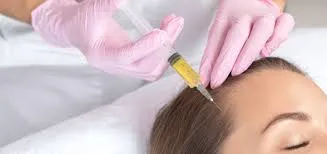Many Pomeranian owners panic when their fluffy companion starts losing fur. Pomeranian hair loss treatment can feel overwhelming, especially if you don’t know whether it’s a normal phase or a serious condition.
In this article, you’ll learn the most common causes of hair loss, proven veterinary treatment options, and realistic recovery timelines. With expert advice, owner experiences, and evidence-based care, you’ll know how to help your Pom regain a full, healthy coat.
Understanding the Causes of Pomeranian Hair Loss

Not all hair loss in Pomeranians signals a medical problem. Some cases are temporary, while others need veterinary care.
Natural and Benign Phases
- Puppy uglies: Between 4–12 months, Pomeranians shed their fluffy puppy coat and grow their adult fur. This temporary patchiness is normal and resolves naturally.
- No treatment is needed—gentle brushing and balanced nutrition support healthy regrowth.
Post-Shaving and Grooming Trauma
- Shaving or close clipping may trigger post-clipping alopecia, where fur grows back very slowly or not at all.
- Regrowth can take 6–24 months, and in some cases, hair never fully returns.
- Prevention tip: Avoid shaving; instead, trim lightly if needed.
Alopecia X (Black Skin Disease)
- A hereditary condition seen in Pomeranians that disrupts the natural hair growth cycle.
- Symptoms: thinning fur on the body, darkened skin, and persistent bald patches.
- This requires veterinary diagnosis and long-term management.
Hormonal & Systemic Causes
- Hypothyroidism, Cushing’s disease, or sex-hormone imbalances may lead to symmetrical bald patches.
- Often accompanied by weight gain, lethargy, or increased thirst/urination.
- Blood tests are essential for accurate diagnosis.
Skin Infections and External Factors
- Allergies, fungal infections, mites, or over-bathing with harsh shampoos can trigger hair loss.
- These usually cause itching, redness, or sores along with fur thinning.
Diagnosing the Problem—When to See a Veterinarian
If your Pomeranian’s coat loss is more than normal shedding, seek veterinary advice.
Recommended Tests
- Blood panel: checks thyroid and hormone function.
- Skin scrapings & fungal cultures: rule out mange or ringworm.
- Hormonal tests: identify Cushing’s or sex hormone imbalances.
Veterinary Dermatologist Referrals
In stubborn or complex cases, a specialist dermatologist may recommend advanced treatments such as microneedling or PRP (platelet-rich plasma).
Proven Pomeranian Hair Loss Treatments
Treatment depends on the underlying cause. Always consult a vet before starting any regimen.
Topical and Skincare Therapies
- Restorative massages with vet-approved creams help stimulate follicles.
- Shampoos/conditioners: use pH-balanced, gentle products with aloe, oatmeal, or coconut oil. Avoid harsh chemicals.
- Bathing should be limited to every 3–4 weeks to protect natural oils.
Nutritional Support & Supplements
- Diet plays a key role in coat health.
- Omega-3 fatty acids: reduce inflammation and support follicle health.
- Biotin & Vitamin A: promote stronger regrowth.
- Choose high-quality protein dog food; avoid fillers.
Hormonal and Medical Therapies
- Melatonin: about 30–40% effective for Alopecia X. Usually safe, but requires veterinary dosing.
- Neutering: sometimes reduces hormone-driven hair loss.
- Advanced drugs: Trilostane or deslorelin implants may be prescribed for hormone-related alopecia.
- These should only be administered under veterinary supervision.
Advanced Procedural Options
- Microneedling: stimulates new follicle growth by creating tiny skin punctures.
- PRP (Platelet-Rich Plasma) therapy: injections of growth-factor-rich plasma improve hair density in some dogs.
- These procedures are performed only in specialized veterinary clinics.

Supportive Care & Environmental Strategies
- Use protective clothing (dog sweaters) to reduce sun or cold exposure.
- Keep grooming gently—never yank or overbrush.
- Schedule regular vet visits for progress monitoring.
Recovery Timeline & Progress Tracking
Every Pom responds differently, but these are general expectations:
- Weeks 1–4: Start with topical therapies and nutritional support. Minor improvements in coat shine.
- 1–3 months: Melatonin and supplements may show visible regrowth.
- 3–6 months: Significant fur density changes; advanced therapies may be added if little progress.
- 6–12+ months: Long-term management and stabilization.
Pro Tip: Keep a photo journal of your Pom’s coat every 2–4 weeks. This helps track progress and guides treatment adjustments.
FAQs
When is hair loss in my Pom normal?
During the “puppy uglies” phase, shedding is normal. If bald patches persist beyond 12 months, consult a vet.
How long until I see hair regrowth?
Minor changes may appear in 1–3 months, but full recovery can take 6–12 months or longer.
Is Alopecia X curable?
No, but it can be managed with long-term treatments like melatonin, PRP, or supportive therapies.
Is melatonin safe for dogs?
Generally, yes, but only under veterinary supervision. Never self-dose.
Can infections cause hair loss?
Yes—fungal, bacterial, and parasitic infections commonly lead to patchy hair loss.
When should I see a specialist?
If hair loss worsens despite treatment, or if skin changes (darkening, sores) appear, ask for a dermatologist referral.
Next Step
Is your Pomeranian struggling with unexplained hair loss? Don’t wait for the problem to worsen; early intervention makes all the difference. Book a consultation with a veterinary dermatology specialist for a personalized pomeranian hair loss treatment plan that restores your pet’s comfort and coat health.
